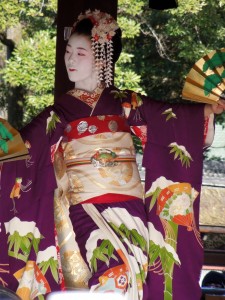It’s a game of the gods. Some say it’s the origins of football. But the way I see it, kemari is an ancient rite in which participants kick a ball to each other with the intention of not letting … Read the rest
It’s a game of the gods. Some say it’s the origins of football. But the way I see it, kemari is an ancient rite in which participants kick a ball to each other with the intention of not letting … Read the rest
The end of the world appears not to have taken place after all, as Mayan freaks suggested, but symbolically with the winter solstice today the death of nature is taking place. So commiserations and congratulations are in order. The king … Read the rest
One thing you’ll often find at shrines are amulets and services to protect against ‘yakudoshi‘, years when one is susceptible to misfortune. I used to think it was pure superstition, but when I got to the age of … Read the rest
One of the key points of Shinto is the notion of renewal, in tune with the perennial ability of nature to renew itself. Here Kevin Short, naturalist and cultural anthropologist, writes of his visit to Shinobazu Pond in Tokyo. (… Read the rest
For the summer solstice celebration last year I went to the Meoto rocks near Ise where I participated in the morning misogi done in the Pacific. It is timed to coincide with sunrise on the year’s longest day, and … Read the rest
An article by Alan Wiren in the Kansai Scene this month provides some interesting information about the Setsubun festival. (The full article can be read here.)
1) It’s traditional to gather up the scattered beans and eat the same … Read the rest

Each Kyoto shrine has its own attraction for the Setsubun ritual. Some feature special demon costumes. Some invite celebrities. Some prepare extensive gifts and make sure that everyone gets beans. Yasaka Jinja offers dances by maiko (apprentice geisha) for the … Read the rest
© 2025 Green Shinto
Theme by Anders Norén — Up ↑